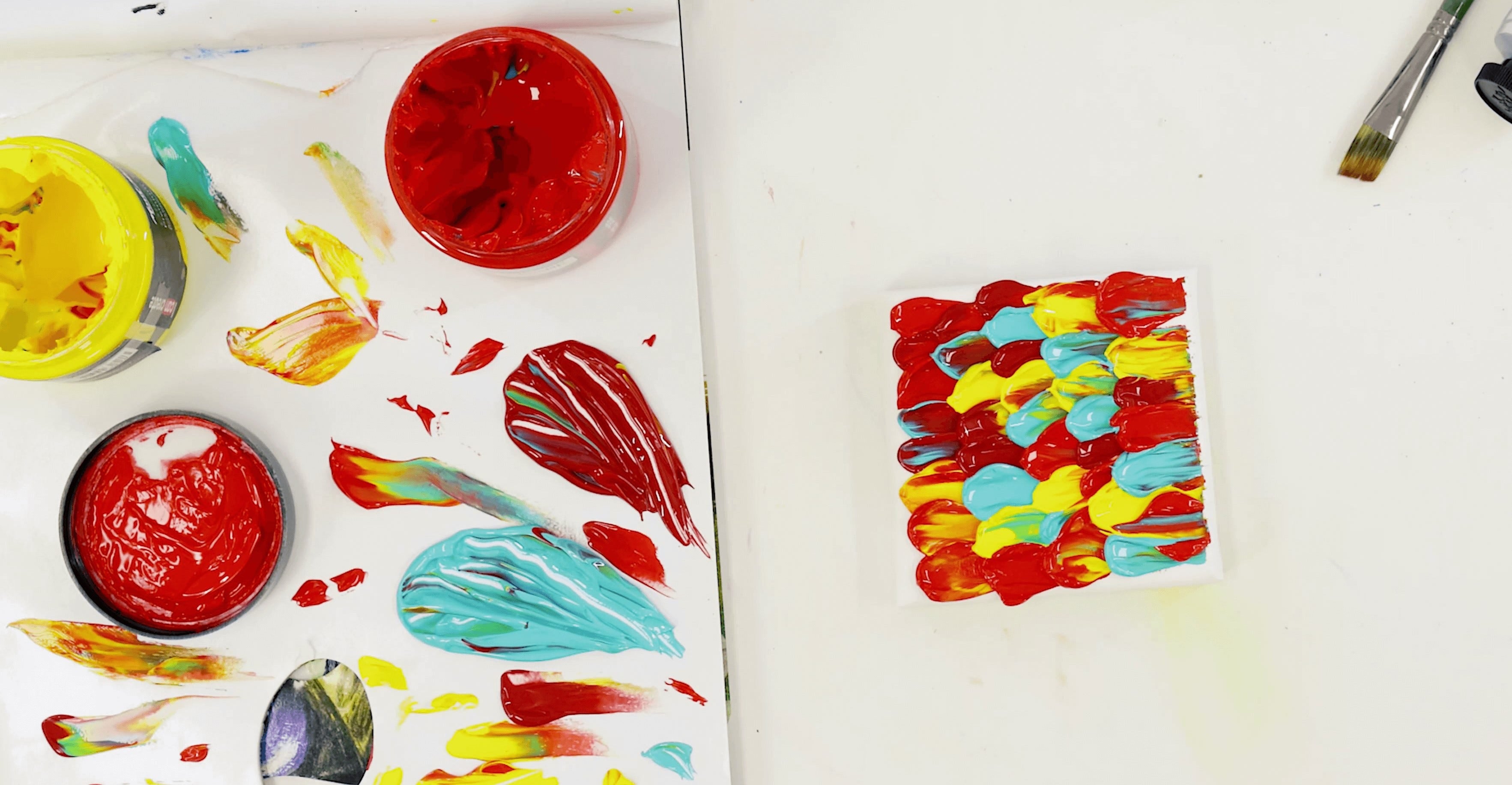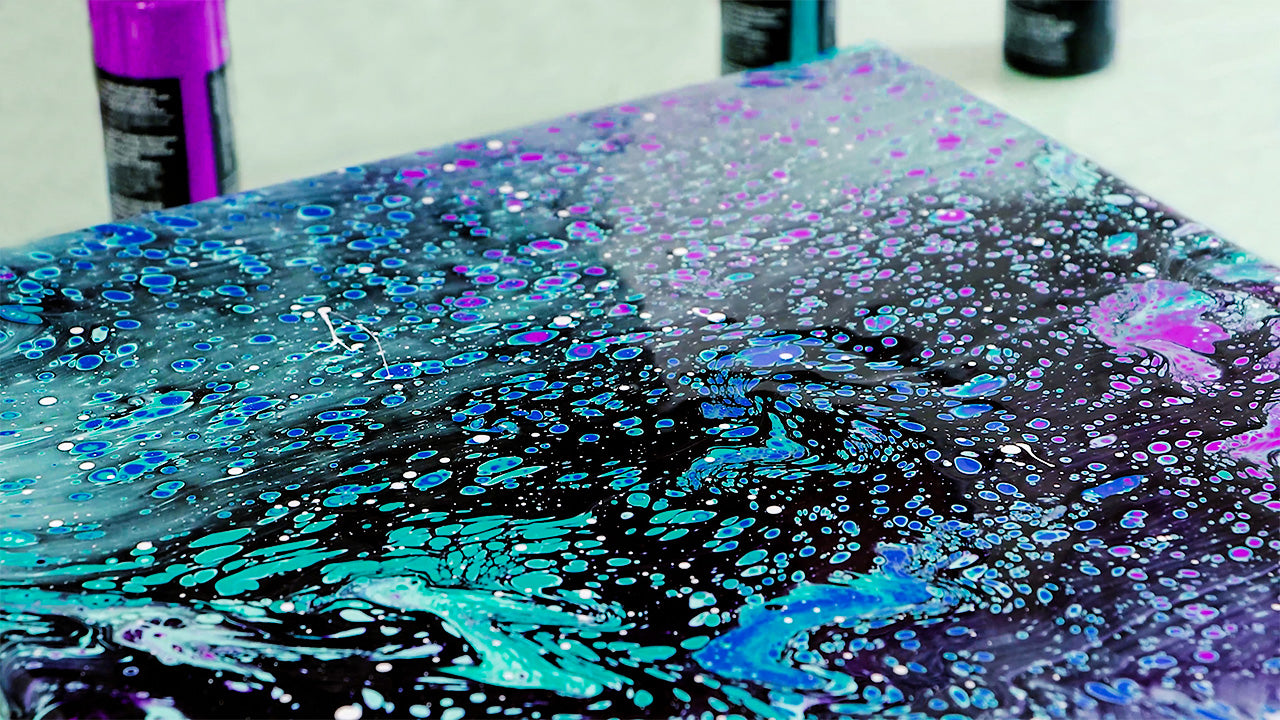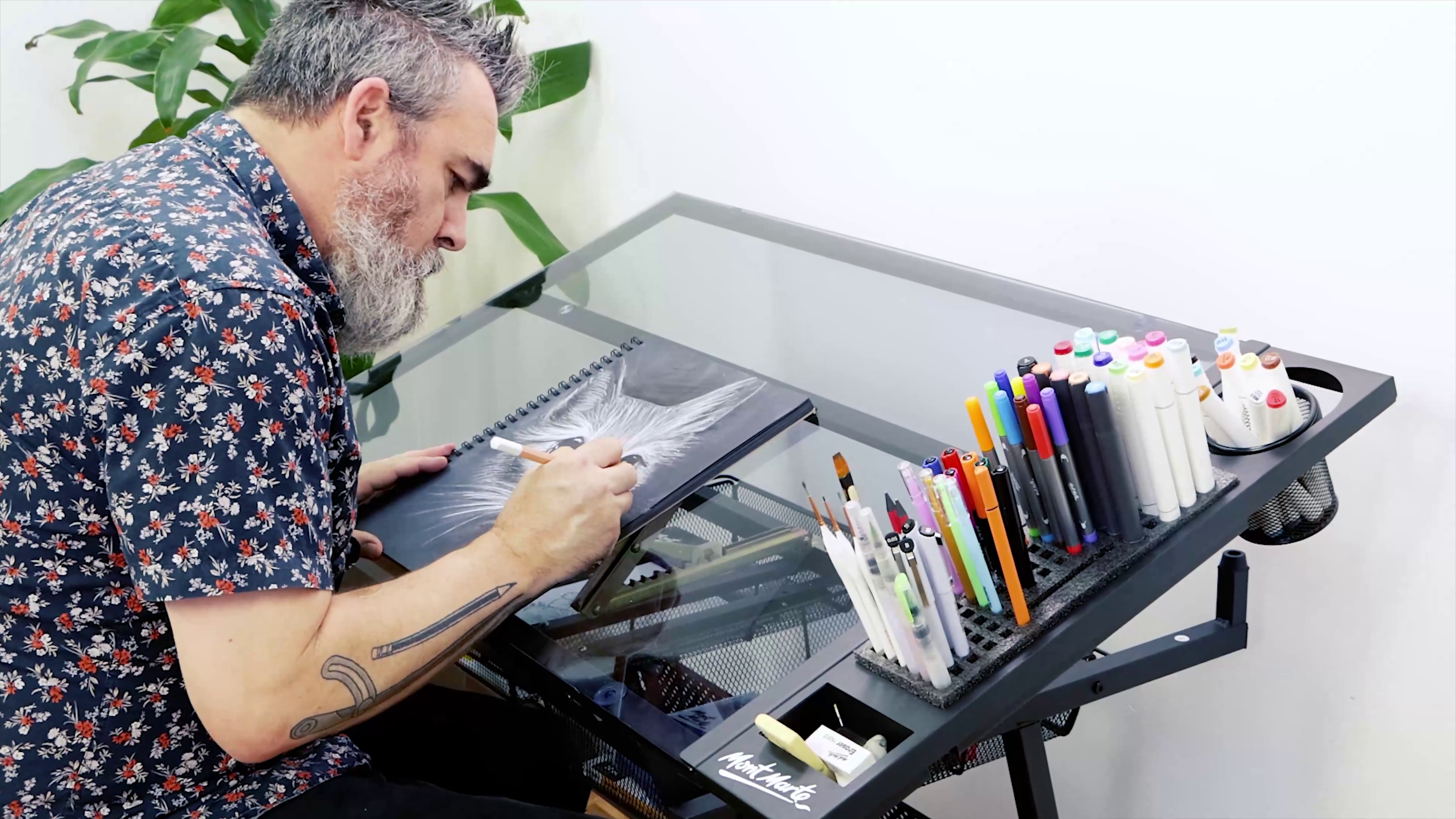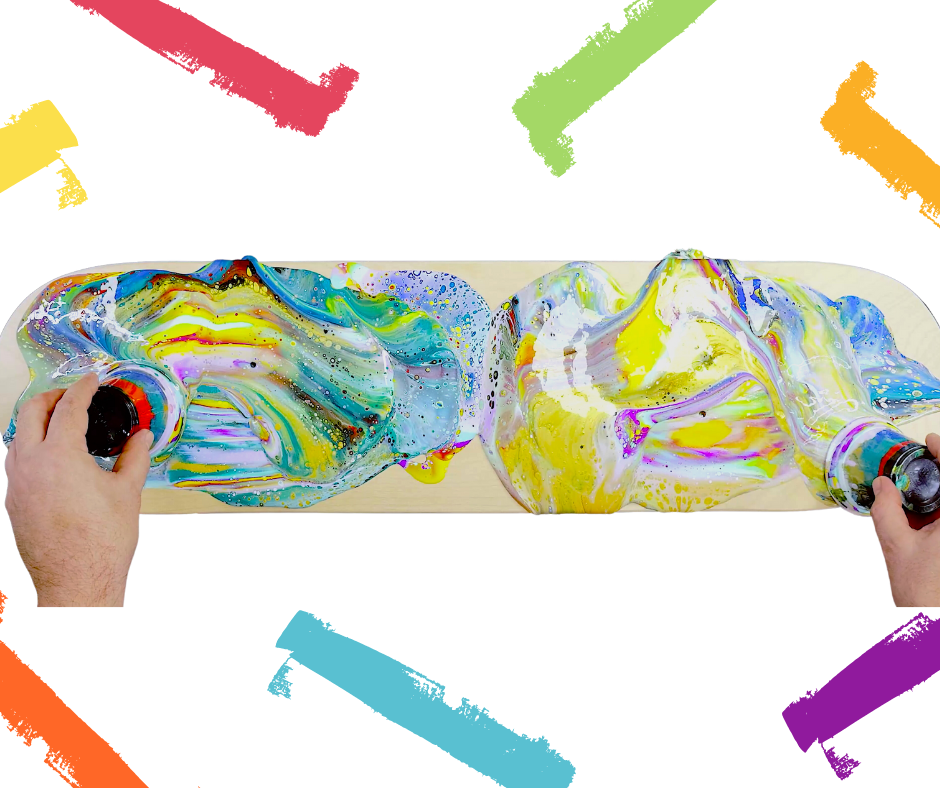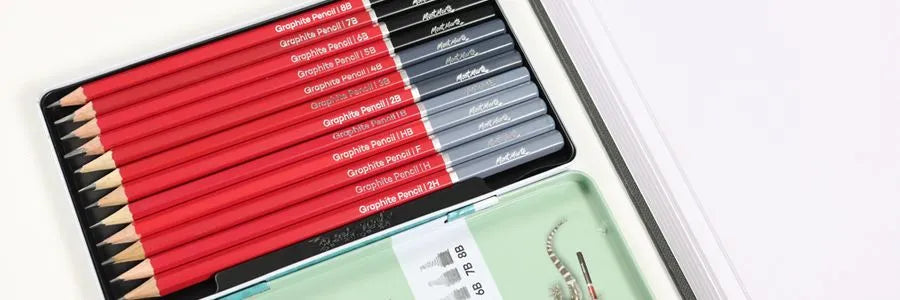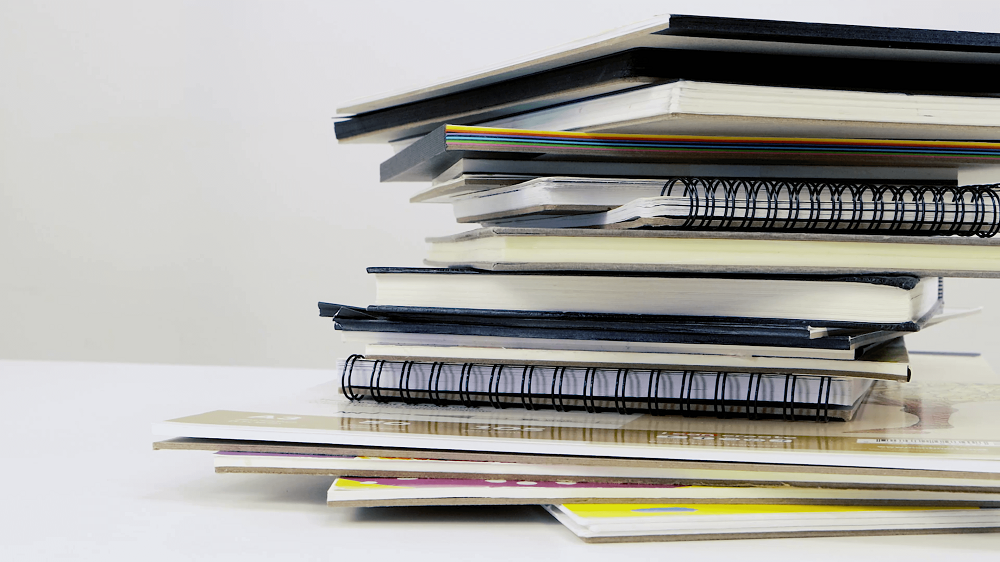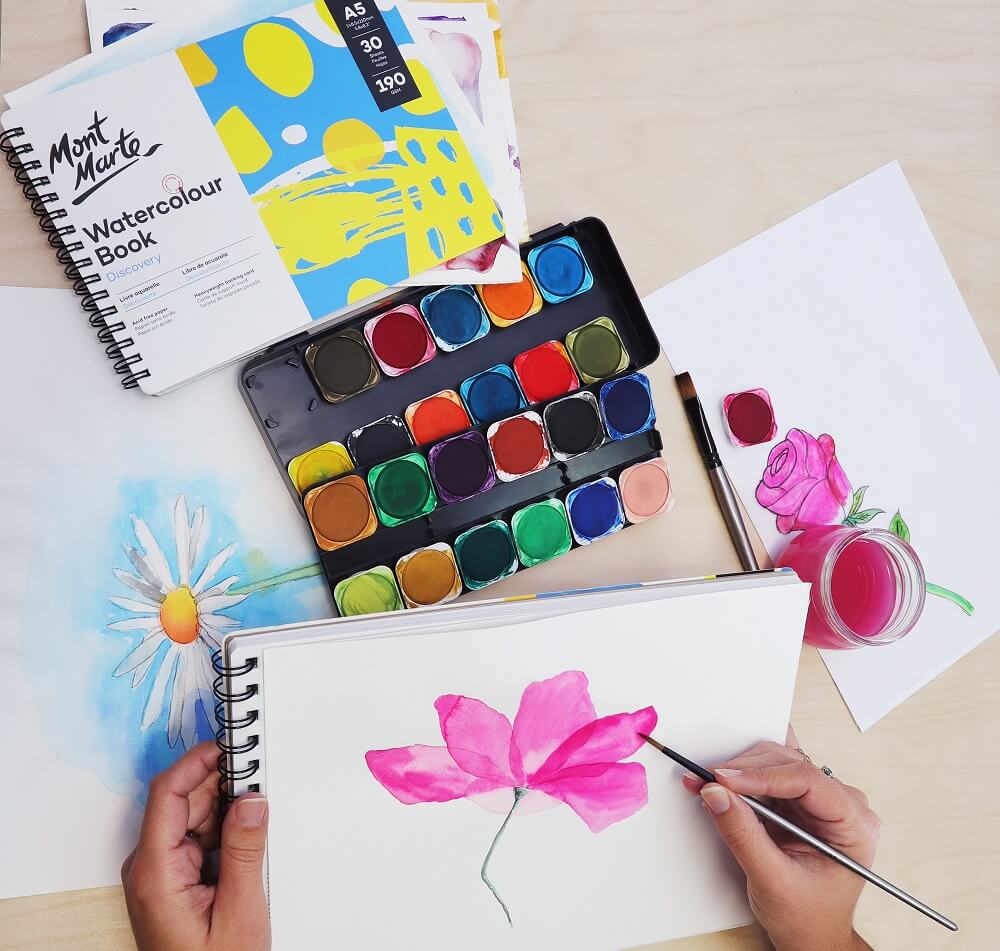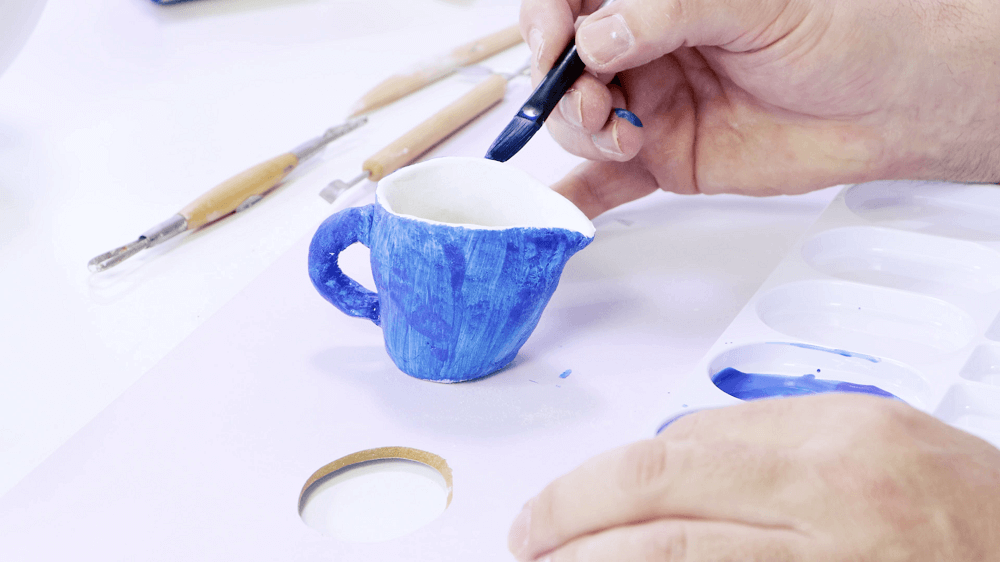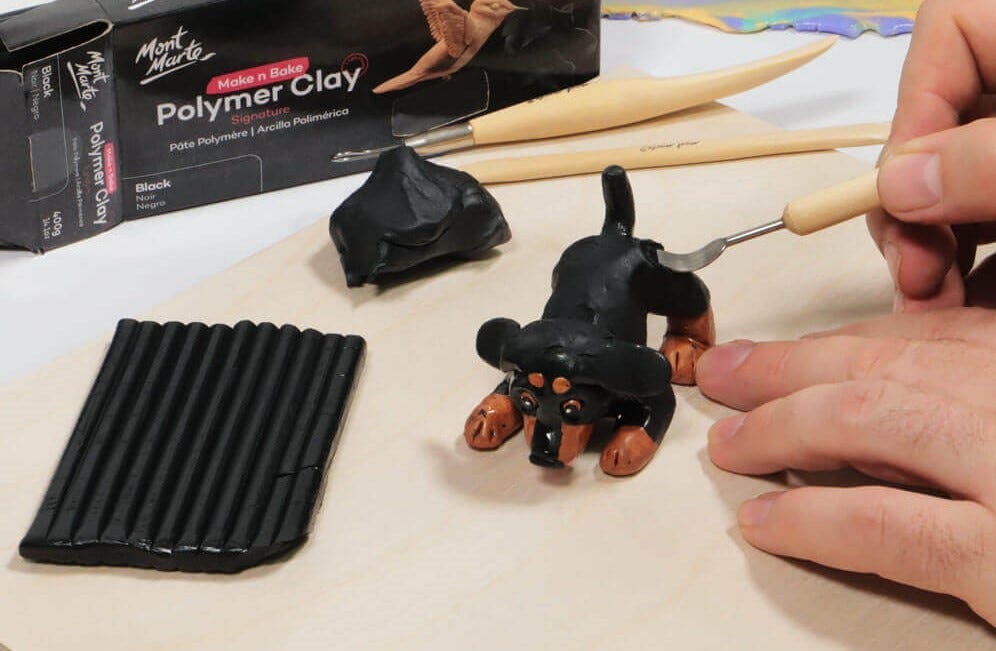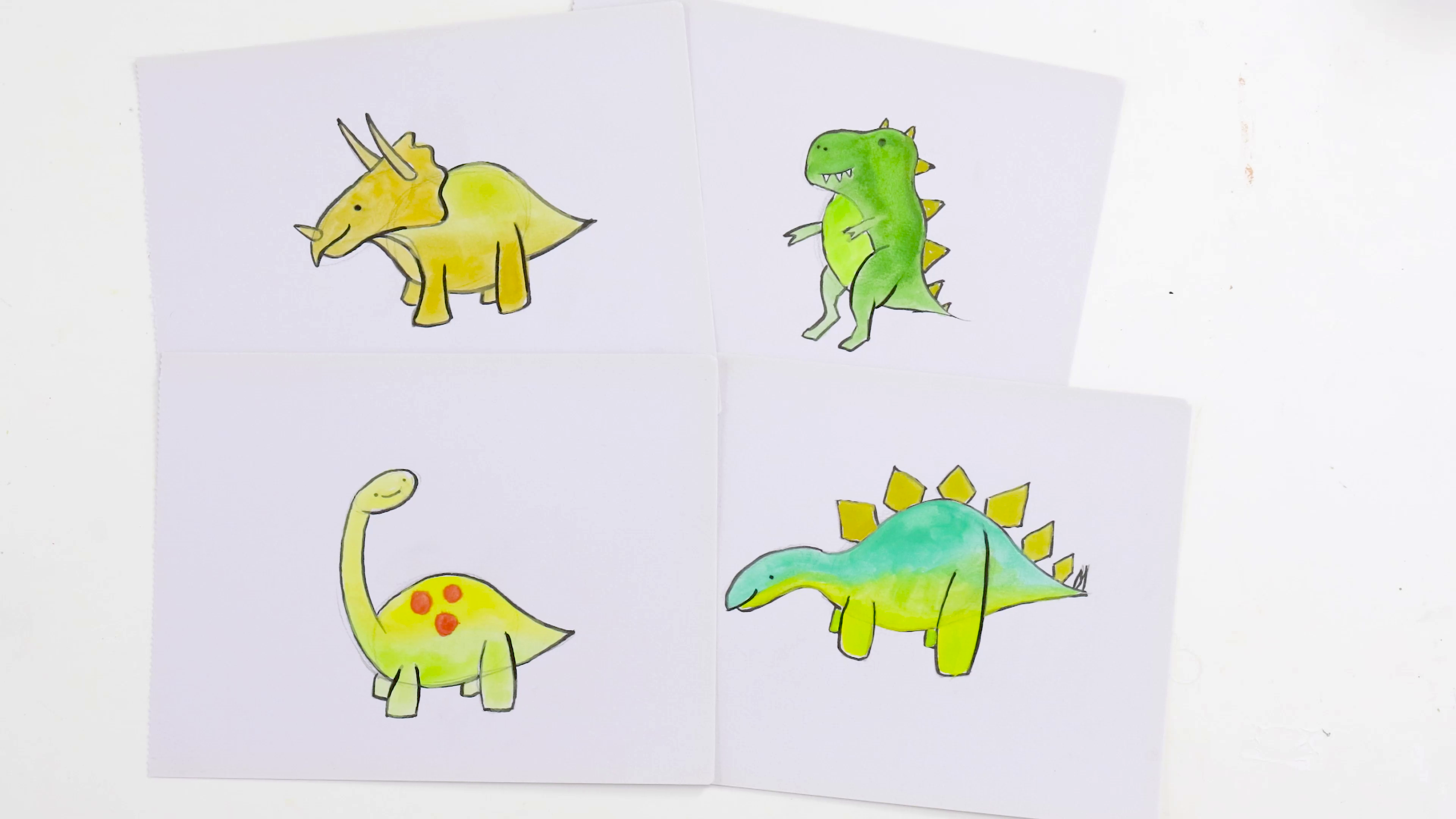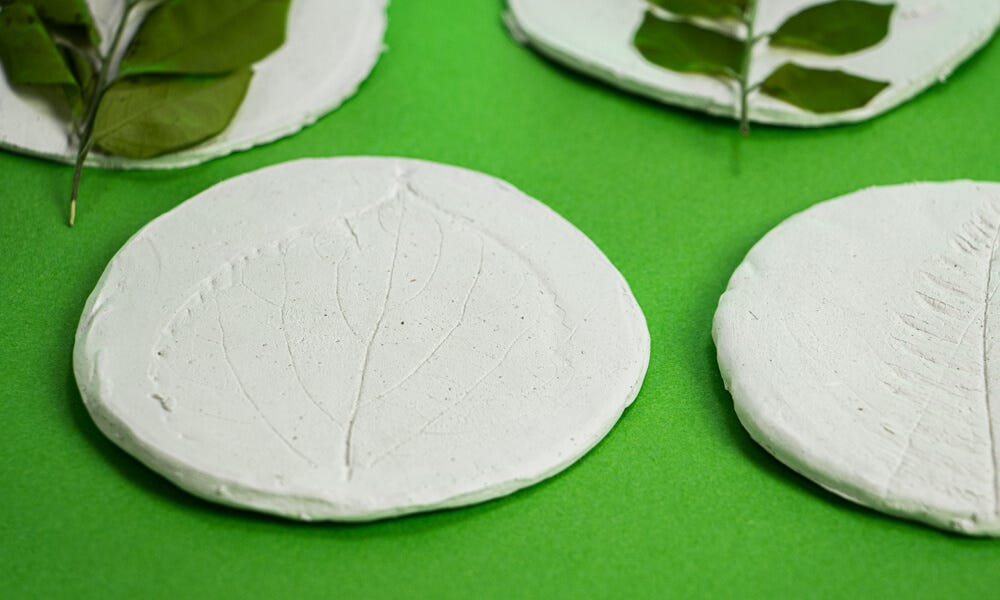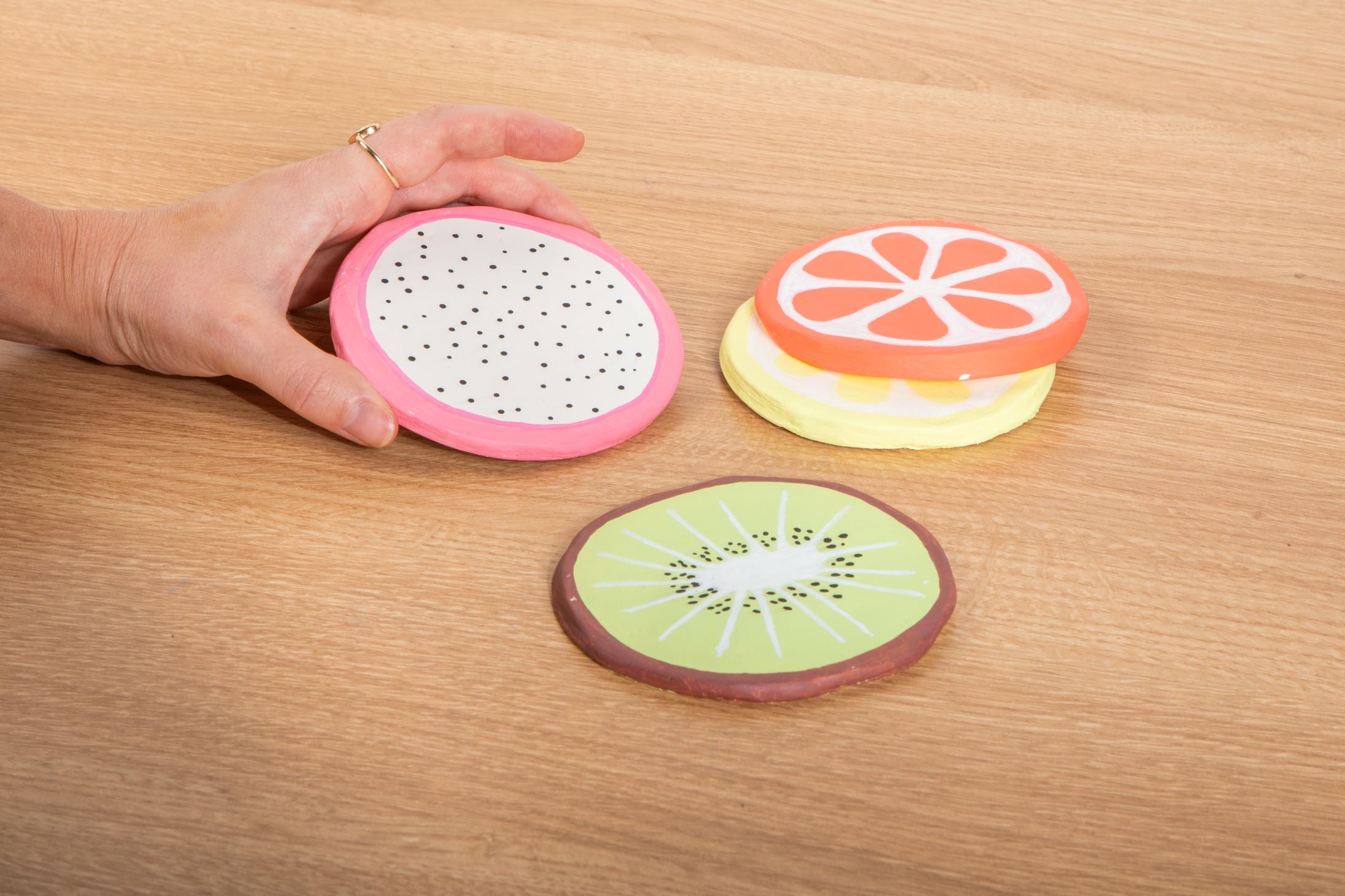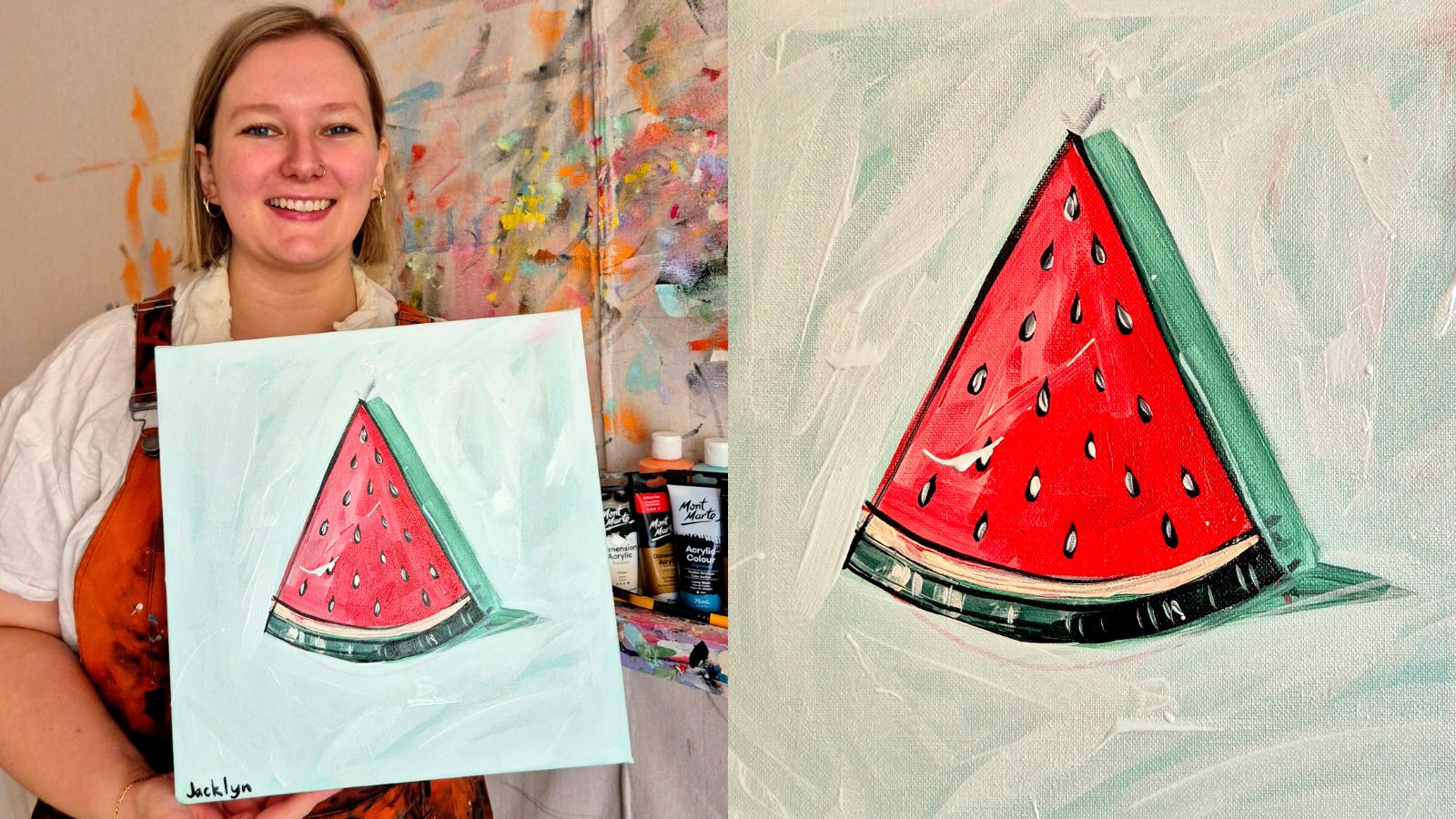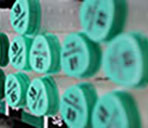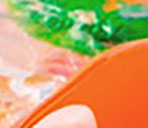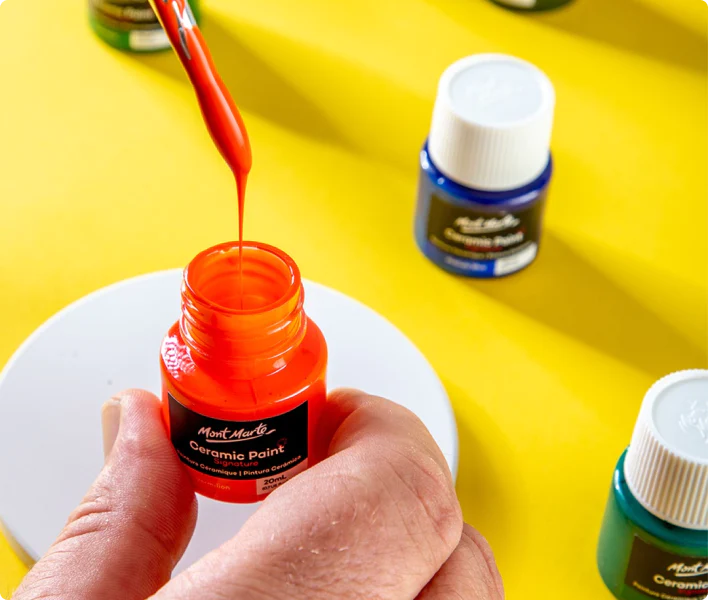Create an art nouveau painting
Looking for your next creative project? In this tutorial we show you how to make your own art nouveau painting using gouache!
1. Prepare the board
Apply gesso to the board with a wide hog bristle brush to seal the board, then allow to dry. If you like a smooth surface you can apply multiple coats of gesso allowing each coat to dry, then sand it, then apply the next coat until you get the desired texture.
2. Tracing the template
Print the template to A3 sizing and shade the back side with a 6B pencil.
Flip our outline sheet and place it shaded side down on to the gessoed board and use some tape to hold it in position.
Using a sharp 2H pencil, retrace all of those lines.
Remove the sheet and refine any elements at this point. It is very important not to make the lines to dark. If the lines are too dark they will be visible under the paint when you apply it.
Once the outline has been transferred we can start painting.
3. Painting the background
The background will be a dirty apricot colour transitioning into a blue grey. To create this tone, mix Vermillion, Titanium White, Yellow Ochre and a touch of Prussian Blue.
Roughly mix it on the palette but do most of the mixing on the board. This way there is some texture within the coat.
Mix more Prussian Blue into the mix and apply it onto the bottom portion of the board. To get two colours of gouache to transition they need to be wet and the blend happens easiest if you make gentle circular movements with the brush.
4. Painting the girl
The skin tone for this project was created from Titanium White, Vermillion and Yellow Ochre with a touch of Burnt Sienna. Mix up a light tone, a middle tone and a dark tone on the pallet.
Lay in the dark areas first, then apply the mid tones followed by the light highlight areas. Once the face is on we can paint the lips in with Crimson with a touch of Titanium White. The eyes can then be painted in.
The hand can be created the same way as the face lay on the dark tone first and then the lighter tones and highlight areas.
5. Painting the tigers
To paint the tigers we paint the white areas on first. The white areas are clearly marked in the outline so it is easy to see where to put the colour on. Don’t worry if you go over the line work as you should still be able to see it beneath the coat. Once the white is on the face we can paint white into the chest area.
The orange tiger’s coat can be created with Vermillion and Yellow Ochre. Create any highlights a touch of Titanium White added to the orange colour. We start with the face and lay the light orange areas on first starting with the nose. Create a soft transition from the light orange to a darker orange and soften the blend with the small hog bristle brush.
Once you’re happy with the face we can apply some of the darker orange tone into the body. Blend the white up into the orange. To create a soft transition between colours you may have to reapply some white to create the blend.
The nose can be painted in with a pink created from Crimson and Titanium White. Paint the eye with Yellow.
Next, we can start to add the black markings on the face. Like the rest of this project it is quite stylized and the stripes around the face are basically triangular. Work across the tiger and lay in the stripes over the body.
Once we are happy with the top tiger we can move on the bottom tiger following the same steps.
6. The hair and the coat
The hair has been simplified for this project and is created with straight Vermillion.
After the hair, apply the woman’s coat. Begin with Prussian Blue and then apply a second coat of Black.
7. Final touches The final step is to put some branches into the scene to add interest. You can flip the screen upside down as thin lines can be easier to paint this way.
Material List
- Gouache Brush Set in Wallet Signature 11pc
- Painting Board Premium 40.6 x 50.8cm (16 x 20in)
- Acrylic Palette Signature 30 x 40cm (12 x 16in)


